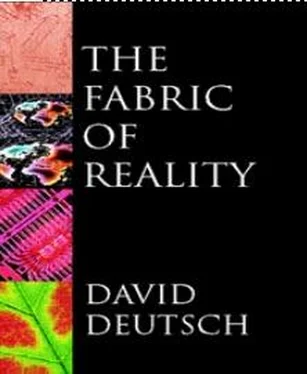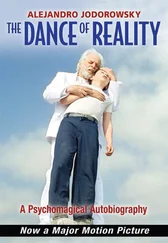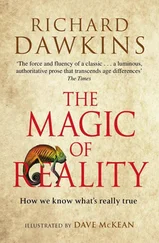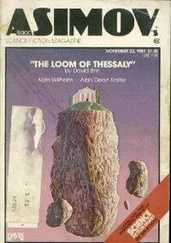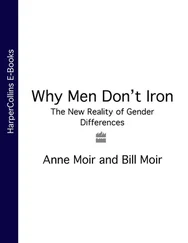David Deutch - The Fabric of Reality
Здесь есть возможность читать онлайн «David Deutch - The Fabric of Reality» весь текст электронной книги совершенно бесплатно (целиком полную версию без сокращений). В некоторых случаях можно слушать аудио, скачать через торрент в формате fb2 и присутствует краткое содержание. ISBN: , Жанр: Физика, Философия, на английском языке. Описание произведения, (предисловие) а так же отзывы посетителей доступны на портале библиотеки ЛибКат.
- Название:The Fabric of Reality
- Автор:
- Жанр:
- Год:неизвестен
- ISBN:0-7139-9061-9
- Рейтинг книги:4 / 5. Голосов: 2
-
Избранное:Добавить в избранное
- Отзывы:
-
Ваша оценка:
- 80
- 1
- 2
- 3
- 4
- 5
The Fabric of Reality: краткое содержание, описание и аннотация
Предлагаем к чтению аннотацию, описание, краткое содержание или предисловие (зависит от того, что написал сам автор книги «The Fabric of Reality»). Если вы не нашли необходимую информацию о книге — напишите в комментариях, мы постараемся отыскать её.
The Fabric of Reality — читать онлайн бесплатно полную книгу (весь текст) целиком
Ниже представлен текст книги, разбитый по страницам. Система сохранения места последней прочитанной страницы, позволяет с удобством читать онлайн бесплатно книгу «The Fabric of Reality», без необходимости каждый раз заново искать на чём Вы остановились. Поставьте закладку, и сможете в любой момент перейти на страницу, на которой закончили чтение.
Интервал:
Закладка:
So by about 1900 there was a crisis at the foundations of mathematics — namely, that there were no foundations. But what had become of the laws of pure logic? Were they not supposed to resolve all disputes within the realm of mathematics? The embarrassing fact was that the ‘laws of pure logic’ were in effect what the disputes in mathematics were now about. Aristotle had been the first to codify such laws in the fourth century BC, and so founded what is today called proof theory. He assumed that a proof must consist of a sequence of statements, starting with some premises and definitions and ending with the desired conclusion. For a sequence of statements to be a valid proof, each statement, apart from the premises at the beginning, had to follow from previous ones according to one of a fixed set of patterns called syllogisms. A typical syllogism was
All men are mortal.
Socrates is a man.
————————————————————
[Therefore] Socrates is mortal.
In other words, this rule said that if a statement of the form ‘all As have property B’ (as in ‘all men are mortal’) appears in a proof, and another statement of the form ‘the individual X is an A’ (as in ‘Socrates is a man’) also appears, then the statement ‘X has property B’ (‘Socrates is mortal’) may validly appear later in the proof, and in particular it is a valid conclusion. The syllogisms expressed what we would call rules of inference — that is, rules defining the steps that are permitted in proofs, such that the truth of the premises is transmitted to the conclusions. By the same token, they are rules that can be applied to determine whether a purported proof is valid or not.
Aristotle had declared that all valid proofs could be expressed in syllogistic form. But he had not proved this! And the problem for proof theory was that very few modern mathematical proofs were expressed purely as a sequence of syllogisms; nor could many of them be recast in that form, even in principle. Yet most mathematicians could not bring themselves to stick to the letter of the Aristotelian law, since some of the new proofs seemed just as self-evidently valid as Aristotelian reasoning. Mathematics had moved on. New tools such as symbolic logic and set theory allowed mathematicians to relate mathematical structures to one another in new ways. This had created new self-evident truths that were independent of the classical rules of inference, so those classical rules were self-evidently inadequate. But which of the new methods of proof were genuinely infallible? How were the rules of inference to be modified so that they would have the completeness that Aristotle had mistakenly claimed? How could the absolute authority of the old rules ever be regained if mathematicians could not agree on what was self-evident and what was nonsense?
Meanwhile, mathematicians were continuing to construct their abstract castles in the sky. For practical purposes many of these constructs seemed sound enough. Some had become indispensable in science and technology, and most were connected by a beautiful and fruitful explanatory structure. Nevertheless, no one could guarantee that the entire structure, or any substantial part of it, was not founded upon a logical contradiction, which would make it literally nonsense. In 1902 Bertrand Russell proved that a scheme for defining set theory rigorously, which had just been proposed by the German logician Gottlob Frege, was inconsistent. This did not mean that it was necessarily invalid to use sets in proofs. Indeed, very few mathematicians seriously supposed that any of the usual ways of using sets, or arithmetic, or other core areas of mathematics, might be invalid. What was shocking about Russell’s result was that mathematicians had believed their subject to be par excellence the means of delivering absolute certainty through the proofs of mathematical theorems. The very possibility of controversy over the validity of different methods of proof undermined the whole purpose (as it was supposed) of the subject.
Many mathematicians therefore felt that it was a matter of urgency to place proof theory, and thereby mathematics itself, on a secure foundation. They wanted to consolidate after their headlong advances: to define once and for all which types of proof were absolutely secure, and which were not. Whatever was outside the secure zone could be dropped, and whatever was inside would be the sole basis of all future mathematics.
To this end, the Dutch mathematician Luitzen Egbertus Jan Brouwer advocated an extreme conservative strategy for proof theory, known as intuitionism, which still has adherents to this day. Intuitionists try to construe ‘intuition’ in the narrowest conceivable way, retaining only what they consider to be its unchallengeably self-evident aspects. Then they elevate mathematical intuition, thus defined, to a status higher even than Plato afforded it: they regard it as being prior even to pure logic. Thus they regard logic itself as untrustworthy, except where it is justified by direct mathematical intuition. For instance, intuitionists deny that it is possible to have a direct intuition of any infinite entity. Therefore they deny that any infinite sets, such as the set of all natural numbers, exist at all. The proposition ‘there exist infinitely many natural numbers’ they would consider self-evidently false. And the proposition ‘there exist more Cantgotu environments than physically possible environments’ they would consider completely meaningless.
Historically, intuitionism played a valuable liberating role, just as inductivism did. It dared to question received certainties — some of which were indeed false. But as a positive theory of what is or is not a valid mathematical proof, it is worthless. Indeed, intuitionism is precisely the expression, in mathematics, of solipsism. In both cases there is an over-reaction to the thought that we cannot be sure of what we know about the wider world. In both cases the proposed solution is to retreat into an inner world which we can supposedly know directly and therefore (?) can be sure of knowing truly. In both cases the solution involves either denying the existence — or at least renouncing explanation — of what lies outside. And in both cases this renunciation also makes it impossible to explain much of what lies inside the favoured domain. For instance, if it is indeed false, as intuitionists maintain, that there exist infinitely many natural numbers, then we can infer that there must be only finitely many of them. How many? And then, however many there are, why can we not form an intuition of the next natural number above that one? Intuitionists would explain this problem away by pointing out that the argument I have just given assumes the validity of ordinary logic. In particular, it involves inferring, from the fact that there are not infinitely many natural numbers, that there must be some particular finite number of them. The relevant rule of inference is called the law of the excluded middle. It says that, for any proposition X (such as ‘there are infinitely many natural numbers’), there is no third possibility between X being true and its negation (‘there are finitely many natural numbers’) being true. Intuitionists coolly deny the law of the excluded middle.
Since, in most people’s minds, the law of the excluded middle is itself backed by a powerful intuition, its rejection naturally causes non-intuitionists to wonder whether the intuitionists’ intuition is so self-evidently reliable after all. Or, if we consider the law of the excluded middle to stem from a logical intuition, it leads us to re-examine the question whether mathematical intuition really supersedes logic. At any rate, can it be self-evident that it does?
Читать дальшеИнтервал:
Закладка:
Похожие книги на «The Fabric of Reality»
Представляем Вашему вниманию похожие книги на «The Fabric of Reality» списком для выбора. Мы отобрали схожую по названию и смыслу литературу в надежде предоставить читателям больше вариантов отыскать новые, интересные, ещё непрочитанные произведения.
Обсуждение, отзывы о книге «The Fabric of Reality» и просто собственные мнения читателей. Оставьте ваши комментарии, напишите, что Вы думаете о произведении, его смысле или главных героях. Укажите что конкретно понравилось, а что нет, и почему Вы так считаете.
